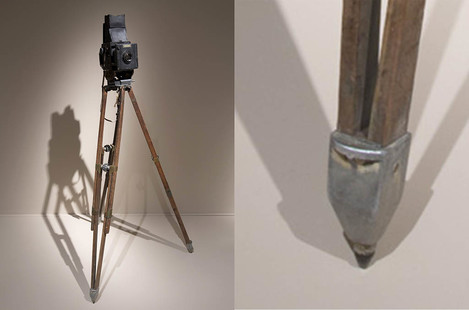Staying Sharp

Tim Parkin
Tim Parkin is a British landscape photographer, writer, and editor best known as the co-founder of On Landscape magazine, where he explores the art and practice of photographing the natural world. His work is thoughtful and carefully crafted, often focusing on subtle details and quiet moments in the landscape rather than dramatic vistas. Alongside his photography and writing, he co-founded the Natural Landscape Photography Awards, serves as a judge for other international competitions. Through all these projects, Parkin has become a respected and influential voice in contemporary landscape photography.
During the testing and research for the recent tripods review article, the subject of tripod spikes came up a few times. I’ve taken it for granted for quite some time that spikes are essential tripod accessories but it seems there are quite a few people who don’t use them or, if they do, are happy to use the small spike tips that often come with professional tripods. Hence I thought it would be good to do a little research on the topic.
What are tripod spikes supposed to do?
In order for a tripod to hold a camera steady, it’s important that the ground it’s standing on doesn’t move. This can be taken for granted if the ground is solid rock but unlike urban photography where tarmac and concrete can be relied on pretty much everywhere, our natural landscape has all types of ground cover, from grass to peat, bog and heather, sand, leaf litter etc. If your tripod is resting on these types of ground cover and only has rounded, hard rubber feet then there are a few possibilities for camera movement. Here are a few examples of situations that may cause issues.
Slow Sinking
You know the feeling when you’re standing on what you thought was solid ground but slowly the mud or sand and water is rising up the sides of your shoes. Well your tripod only has to let you camera sink by a fraction of a millimeter and your photograph may end up blurred. You’re unlikely to sink more than a couple of inches as in most cases the lower layers beneath the ground are more compacted. This can be even more of a factor during long exposures.
Slipping
A few slippery leaves and your tripod foot can slip outward slowly. This can be mitigated with extra stiff legs and spider (the bit that connects your legs to your tripod head) and could be worse if you’re working between leg angle stops. Some tripods can be tightened so the leg angle movement is very stiff which can help.
Floating Mats of Hell
If you’ve stood on floating bog mats in Scotland (or elsewhere), you’ll recognise this one! Imagine setting up your tripod and camera on a mattress. If you’re also standing on that mattress next to the tripod, your movement will get transferred to the tripod. Instead of a mattress, think of a surface of peat/loam soil floating above a boggy quagmire and the same effect will happen, even if it is not quite as pronounced. This is a good reason not to move around near your tripod while taking photographs, especially long exposures.


